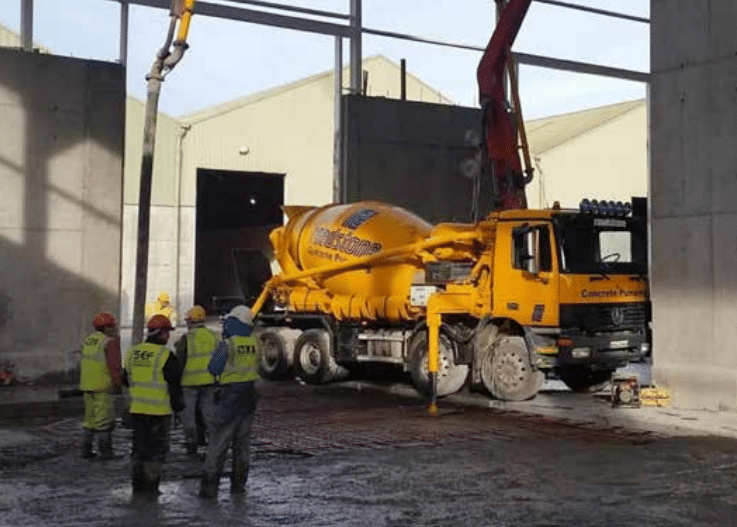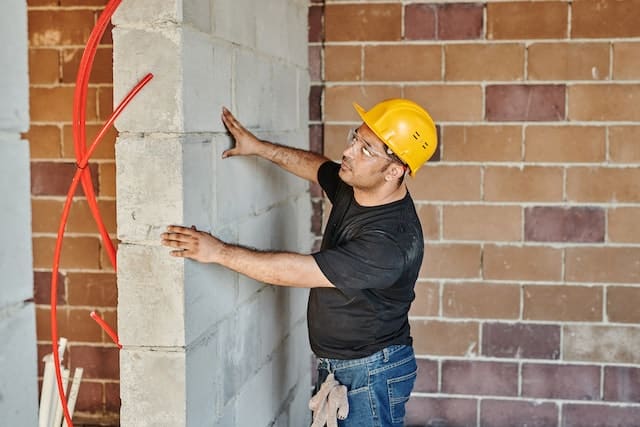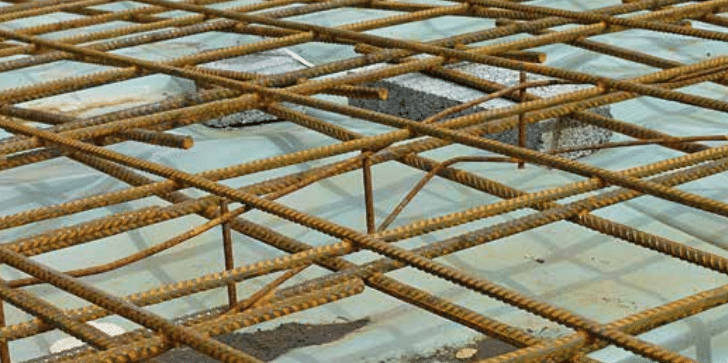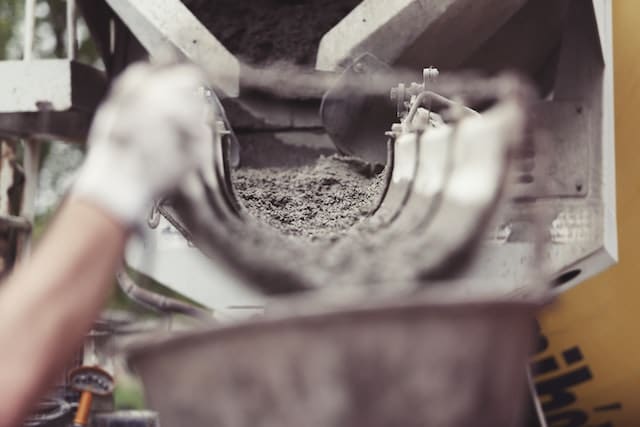Working with concrete to make your floors requires a bit of prep, to protect it from the weather and from chemical or environmental conditions.
In this article we cover:
- How to work with concrete in cold weather
- How to work with concrete in hot weather
- Basic checklist of what to look out for
- Optimal concrete mixes
- Chemicals that will affect the concrete mix
- Dealing with corrosion of rebar
- Potential effects of sewage on concrete
- How to make sure concrete will set properly
Defects in concrete can occur because of chemical and environmental conditions, construction or workmanship issues, or unexpected loading. A gradual loss of performance is usually described as deterioration. Here’s what you need to know about controlling the environmental conditions.
Concreting in cold weather
No matter what you may have heard, there is no such thing as a concrete antifreeze additive. There are additives which help concrete to endure freeze/thaw cycles, but that is a different problem.
If you must lay concrete in cold weather (below 5degC), it needs to be protected. If the temperature of the concrete falls below freezing point (0degC), the water in the mix will freeze and expand, which will damage the concrete strength to the extent that it needs to be removed.
Your aim during cold weather is to keep the concrete above 5degC for at least 48 hours so that it can begin to gain strength. Remember that concrete strength will develop much more slowly in cold weather than it would in warm weather and you need to allow for this extra time delay before placing any loads onto it.

There are three categories of severity of cold weather that need to be considered.
Ambient temperature below 5degC but with no frost: After taking steps to ensure that the concrete remains at a minimum of 5degC, bear in mind the slow rate of strength gain before removing formwork or supports to beams or slabs. To increase the strengthening rate, your structural engineer might consider increasing the cement content and reducing or eliminating the ratio of GGBS or PFA in the mix.
Slight frost at night: Protect all fresh concrete immediately after it is laid. The temperature of the concrete when delivered should be a minimum of 5degC. If the supplier cannot guarantee this, decide whether you can protect it adequately or whether you should delay the concreting until the weather warms up. If proceeding with the work, protection should be provided by frost blankets and insulated formwork. Allow for the provision of temporary covers and space heaters if the temperature continues to fall. Make sure that sub-bases, formwork, reinforcement and any other equipment used in contact with the concrete are all free from ice and snow.
Frost day and night: Protect and insulate the concrete as for Category 2 and provide additional heat using electric concrete blankets or hydronic heating systems which circulate a hot water and glycol liquid through flexible pipes which are laid in direct contact with the concrete and insulated on the exterior side. If a heating system is not available, it would be wise to delay concreting until the weather conditions improve.
Concreting in hot weather
Concreting in hot weather can give rise to a number of problems as the heat increases the rate and therefore the temperature of the hydration process. The main issues are:
Delamination. The surfaces of the concrete will tend to dry faster, which will cause the topmost surfaces to de-bond from the main body of concrete, resulting in later delamination and flaking of the surface finish.

Cracking. Thermal cracking occurs where the normal heat in the concrete due to the hydration process is increased during hot weather. This causes the heat of the interior of the concrete to raise significantly above surface temperatures, resulting in cracking. Significant cracking may also occur when concrete cools rapidly during a cool night after being placed on a hot day. Plastic shrinkage cracking occurs when hot weather dries the surface of the concrete too fast so that the natural dispersal of moisture is disrupted.
Workability. When the setting time is reduced due to hot weather, this allows less time to place and finish the concrete. Concrete slump rates will slow in hot weather and therefore workability and flow rates will decrease more rapidly. Adding water to compensate must be avoided, as such a course of action would weaken the concrete and adversely affect its long-term durability.
If you must lay concrete in cold weather (below 5degC), it needs to be protected…
Some checks and precautions which can be taken to reduce the impact of hot weather are:
- Specify the correct mix for the conditions.
- Control the use of admixtures to maintain the ratio of cement to water.
- Use an approved plasticiser or retarder to slow down the setting time.
- Check the type of cement being used, as some cement mixes can accelerate the rate and heat of hydration more than others.
- Try to place concrete during the cooler times of the day or even at night.
- Be aware that cold joints may form between one batch and another. These are formed when one batch of concrete has started to set before the next batch has arrived. Unlike the compaction of two fresh workable batches of concrete, it then becomes impossible to knit the start and finish of the two batches together. Depending on the position of the joint, this could become a potential plane of weakness.
Chemical and environmental conditions
The correct specification of concrete at the design stage will help reduce the probability of defects or failures due to environmental and chemical conditions. The most common forms of chemical attack are from acids, sulfates, chlorides, and physical salt weathering.
The designer must therefore know the environmental and chemical conditions to which the concrete will be subjected. Concrete is usually attacked by chemicals which it happens to be in contact with, as long as they are of sufficient concentrations to cause damage. Here are of the most common culprits.
Water. The cement content of concrete standing permanently in water will eventually dissolve and the rate of deterioration will be greater in more acidic, softer water. Concrete made with limestone aggregate will suffer even greater deterioration due to the increase in the dissolution of the aggregate as well as in the cement. The solution is usually simple in domestic building projects, i.e. construct a properly designed drainage system to reduce the level of groundwater to below the base of any structural concrete.
Sulfates will react with concrete, resulting in cracking and exfoliation of hardened concrete. If there is a steady supply of sulfate, for instance through movement of groundwater, the reaction can lead to a softening and further disintegration of the concrete. Sulfates can be found in de icing salts and are usually the culprits that you might hear about attacking the concrete in multistorey carparks, bridges and other highway structures.
Defects in concrete can occur because of chemical and environmental conditions, construction or workmanship issues, or unexpected loading…

Chloride accelerates the corrosion of steel reinforcement in concrete and the simplest methods of avoiding this is to increase the depth of cover of the concrete over the reinforcement, decrease the permeability of the concrete and to use stainless steel reinforcement.
Domestic sewage generally does not attack concrete. However, if enclosed spaces are left unventilated above the sewage level, hydrogen sulphide gas produced by anaerobic bacteria can combine with moisture (such as that produced by condensation), to create sulphuric acid. The acid then attacks the concrete and is the reason why you can sometimes find significantly damaged precast concrete manholes and concrete pipe crowns. Properly ventilated sewage systems are therefore key to avoiding this problem. (See also ‘HAC’ below.)
Air. The most common concrete problem in my experience is that of general environmental corrosion of concrete reinforcement and is usually found in the sides and soffits of beams and lintels in exposed locations. Steel corrosion (otherwise known as rust) takes up a much larger space than uncorroded steel, so that concrete around the corroded steel will burst, crack and spall under the pressure of the expanding corrosion. The cracks that appear on the surface of the concrete will run parallel to the steel and the reinforcing bars closest to the surface will tend to be the first to be affected by corrosion. Adoption of the steps taken to avoid chloride attack should also work well with simple reinforcement corrosion problems.
Salt. Although not entirely unknown, problems which you would rarely expect to find in concrete in domestic buildings in the UK and Ireland include those of physical salt weathering, delayed ettringite formation (DEF), the influence of hydrocarbons and non-ferrous metals, phenol contamination (in brownfield sites) and alkali-silica reaction (ASR).
Note that concrete made using high-alumina cement (HAC) should not be used for structural purposes in the UK or Ireland but continues to be used for non-structural use under the name calcium aluminate cement (CAC). This product is resistant to hydrogen sulphide attack, so can be used for repairs to sewers and manholes where the situation allows.











